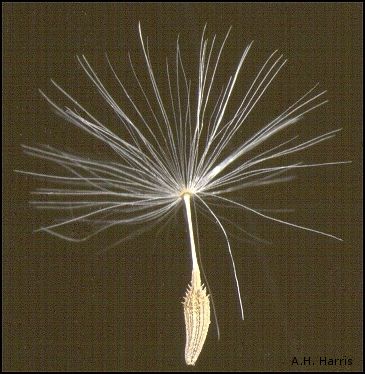
If plants could talk, they, like the scarecrow, might well lament, "If I only had a brain." But brainless though they are, they nonetheless manage to get their seeds scattered around better than the average dumbbell.
Some, like the cottonwoods, use the wind or running water, while others shoot them out like miniature cannonballs. A few just let them drop where they may. Most, though, commandeer--or beg or bribe—animals to disperse them. Burrs and other sticky things, like mistletoe seeds, hang tenaciously onto fur or feathers or bills, or to socks, for that matter. Tasty fruit, like mesquite pods with their included seeds, solicit trips through digestive systems-for example, cattle droppings are thought to be a major agent in dispersing honey mesquite widely through the northern Chihuahuan Desert. Great tasting seeds beseech gathering and caching for later dining—hopefully from absent-minded hoarders or creatures like pocket mice that may not survive long enough to enjoy their stash.
Maybe, in the long run, natural selection is as good for a plant as
having a brain.
![]()
Contributor: Arthur H. Harris, Laboratory for Environmental Biology, Centennial Museum, University of Texas at El Paso.
Desert Diary is a joint production of the Centennial Museum and KTEP National Public Radio at the University of Texas at El Paso.

Dandelions travel with the wind. Shown is a single seed with its "parachute" that allows it to be carried long distances by even a light breeze. Scanned image by A.H. Harris.